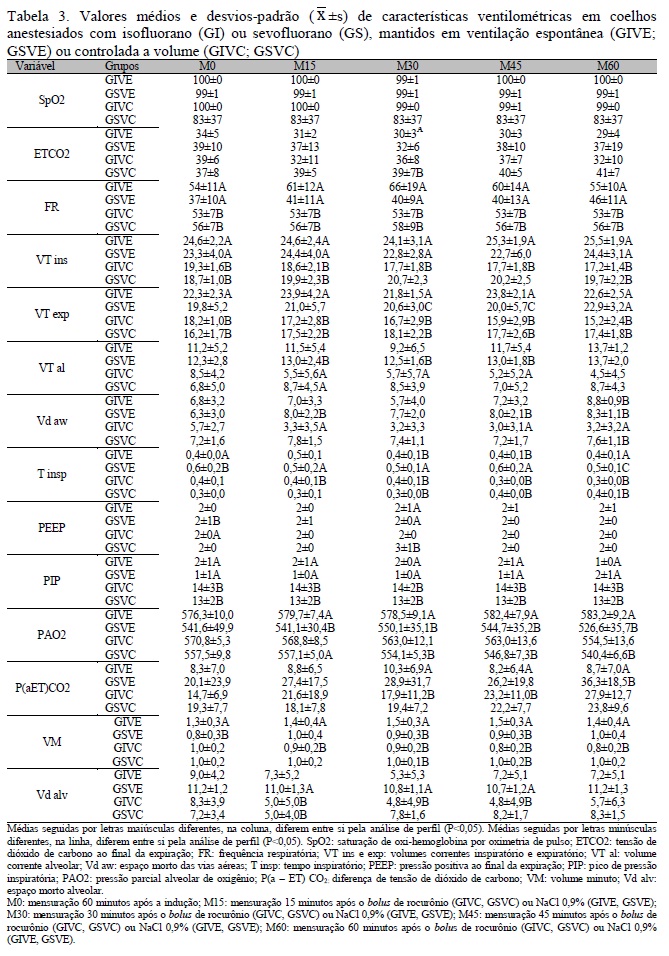The volume-controlled mechanical ventilation and spontaneous ventilation, through haemogasometric, cardiovascular and spirometry variables were evaluated. Twenty-eight rabbits were distributed into two groups: GIVC (isoflurane and volume-controlled ventilation), GIVE (isoflurane and spontaneous ventilation), GSVC (sevoflurane and volume-controlled ventilation) and GSVE (sevoflurane and spontaneous ventilation). Induction was performed by mask with isoflurane (GIVE and GIVC) or sevoflurane (GSVE and GSVC) at 1.5 MAC in 100% oxygen. To maintain anesthesia, MAC was reset to 1. In GIVC and GSVC groups, rocuronium was administered at a dose of 0.6 mg/kg followed by its continuous infusion (0.6 mg/kg/h). In GSVE and GIVE, 0.9% NaCl was administered instead of rocuronium. Controlled ventilation was started by adjusting the capnometry in order to obtain values between 35 and 45 mmHg. Parameters were measured 60 minutes after induction of anesthesia (M0), 15 minutes after the bolus of rocuronium or 0.9% NaCl (M15) and every fifteen minutes (M30, M45 and M60). Hypercapnia and acidosis was evident in GIVC, GSVC and GSVE. We concluded that the volume-controlled mechanical ventilation was not able to maintain normocapnia in rabbits, producing acidosis in them, especially when using sevoflurane. The use of isoflurane showed greater stability than the sevoflurane anesthetic in the species studied.
rabbit; inhalation anesthesia; lagomorphs; mechanical respiration



